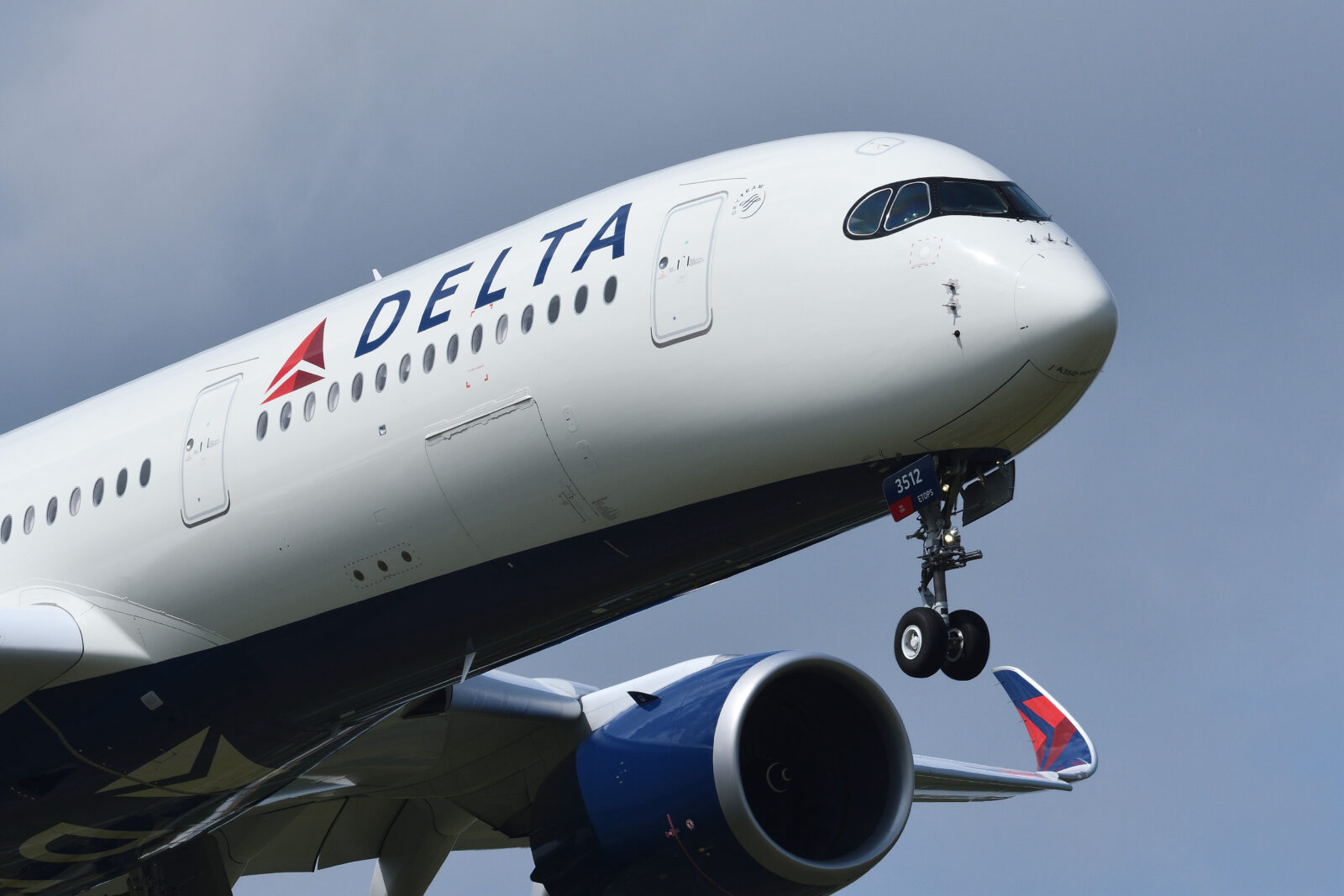
Eleven passengers who were injured when a Delta Air Lines jet flying from Milan to Atlanta hit severe turbulence just 40 minutes from landing were not wearing their seatbelts despite the signs being switched on, new accident data published by the National Transportation Safety Board (NTSB) has revealed.
On Friday, the NTSB published a host of new documents related to the August 2023 accident, which also resulted in two flight attendants sustaining serious injuries and eight others sustaining minor injuries.
Delta flight DL175 departed Milan Malpensa Airport more than three hours late on August 29, 2023, for the 10-hour flight to Atlanta, but after crossing the Atlantic without incident, the Airbus A350-900 was rocked by severe turbulence as it made its approach to land.
The two passengers who were seriously injured were diagnosed with spinal fractures after they were flung from their seats and impacted the ceiling above them. The other injured passengers were mainly treated for neck strain, where they had also hit the ceiling.
Of the two flight attendants who sustained serious injuries, one was treated for back compression fractures and broken ribs, while the other was diagnosed with cervical compression fractures in the neck and upper back.
None of the flight attendants were seated at the time of the incident as they were busy preparing the cabin and galleys for arrival. Some of the other injuries sustained by the crew included neck and ankle strains, knee pain, and concussion.
In a statement provided just over a week after the accident, the Captain said he had noticed areas of rain on their approach path that could cause issues and requested a deviation from air traffic control at Atlanta Hartsfield to avoid the threat.
The air traffic controller denied that request, although the pilots were reassured by the fact that neither the radar nor an iPad-based app showed any bad weather on their assigned flight path.
Other planes that were following the same flight path in front of them had not reported any turbulence either, although, noticing a build-up in the area, the pilots alerted the purser and told her to ‘wrap up the service’ as quickly as possible.
The turbulence lasted just 12 seconds, with just 2 seconds of severe turbulence, although that was still enough to lead to multiple injuries throughout the cabin.
The pilots immediately declared a medical emergency and the plane was met by paramedics after it arrived at the gate in Atlanta. Eleven people had to be transported to the hospital for evaluation and treatment.
Research conducted by the NTSB has revealed that turbulence-related injuries are likely to occur as an airplane is in the descent phase of flight. Based on real-world accident data between 2009 and 2018, researchers found that 36% of injuries stemming from turbulence occur during the descent.
The research also found that 65% of turbulence-related accidents during the descent phase occurred when the plane was below 20,000 feet. In the case of DL175, the aircraft was flying at 14,000 feet when it was struck by the severe turbulence.
Earlier this month, Southwest Airlines adjusted its procedures for flight attendants to ensure that the cabin is secured for landing and that they are seated much sooner than previously permitted.
Flight attendants at the Dallas-based carrier must now aim to be in their jumpseats when the plane descends to 18,000 feet, whereas previously, they could remain working until the plane had descended to just 10,000 feet.
Southwest hopes that the policy change will reduce total flight attendant injuries by as much as 20%.
Related
Mateusz Maszczynski honed his skills as an international flight attendant at the most prominent airline in the Middle East and has been flying ever since... most recently for a well known European airline. Matt is passionate about the aviation industry and has become an expert in passenger experience and human-centric stories. Always keeping an ear close to the ground, Matt's industry insights, analysis and news coverage is frequently relied upon by some of the biggest names in journalism.







